Fondazione dell’Albero d’Oro
Palazzo Vendramin Grimani
San Polo, 2033
30125, Venice
T +39 041 8727 750
info@fondazionealberodoro.org
C.F. 94096710275
PEC fondazionealberodoro@legalmail.it
Palazzo Vendramin Grimani
San Polo, 2033
30125, Venice
T +39 041 8727 750
info@fondazionealberodoro.org
C.F. 94096710275
PEC fondazionealberodoro@legalmail.it
News
Fondazione dell'Albero d'Oro hosts the work of contemporary artist Daniela Busarello. Made in Murano in 2016, the works that make up ANATOMIA DELL’OCEANO are the result of the artist's collaboration with glass master Paolo Crepax. Made with the free hand blown glass technique, ANATOMIA DELL’OCEANO is the artist's manifesto-metaphor.
ANATOMIA DELL'OCEANO
Daniela Busarello, cosmopolitan and eclectic artist, weaves her first ties with the island of Murano between 2010 and 2015. In 2016 she meets Maestro Paolo Crepax with whom she gives life to the group of sculptures ANATOMIA DELL'OCEANO with the intention of bringing attention to the fragile and dramatic situation of the oceans due to global warming.
The works of ANATOMIA DELL’OCEANO are landscape-bodies inspired by the Serenissima and specifically, by the lagoon, by the sea, by this liquid universe that represents Life, but also the Mother. The free-hand blown vases take shape without molds, following the appearance of accidents, imperfections and “scars”, as if to be a declaration on the condition of life. The artist worked the glass in its liquid, then solid state, confronting its transformation and metamorphosis with disproportionate forms and feminine volumes, sensual and delicate at the same time, raw, strong and disturbing.
Brazilian by birth, Parisian by adoption, Italian intermittently, she evolves in a cosmopolitan environment that gives her art both light and nature, vitality, reflection, precision and delicacy. Born into a family of architects, she studied in Paris at the École du Louvre and the Beaux-Arts.
Daniela Busarello is an artist who is committed to re-establishing the harmony between culture and ecosystems, she explores nature by bringing to it a calmed, unifying, syncretic feminine the point of view, carried by a cyclical vision of time. Faithful to the Latin concept of genius loci, she explores different territories, places where she collects "witness materials" to create her works.
Ph. Massimo Pistore



